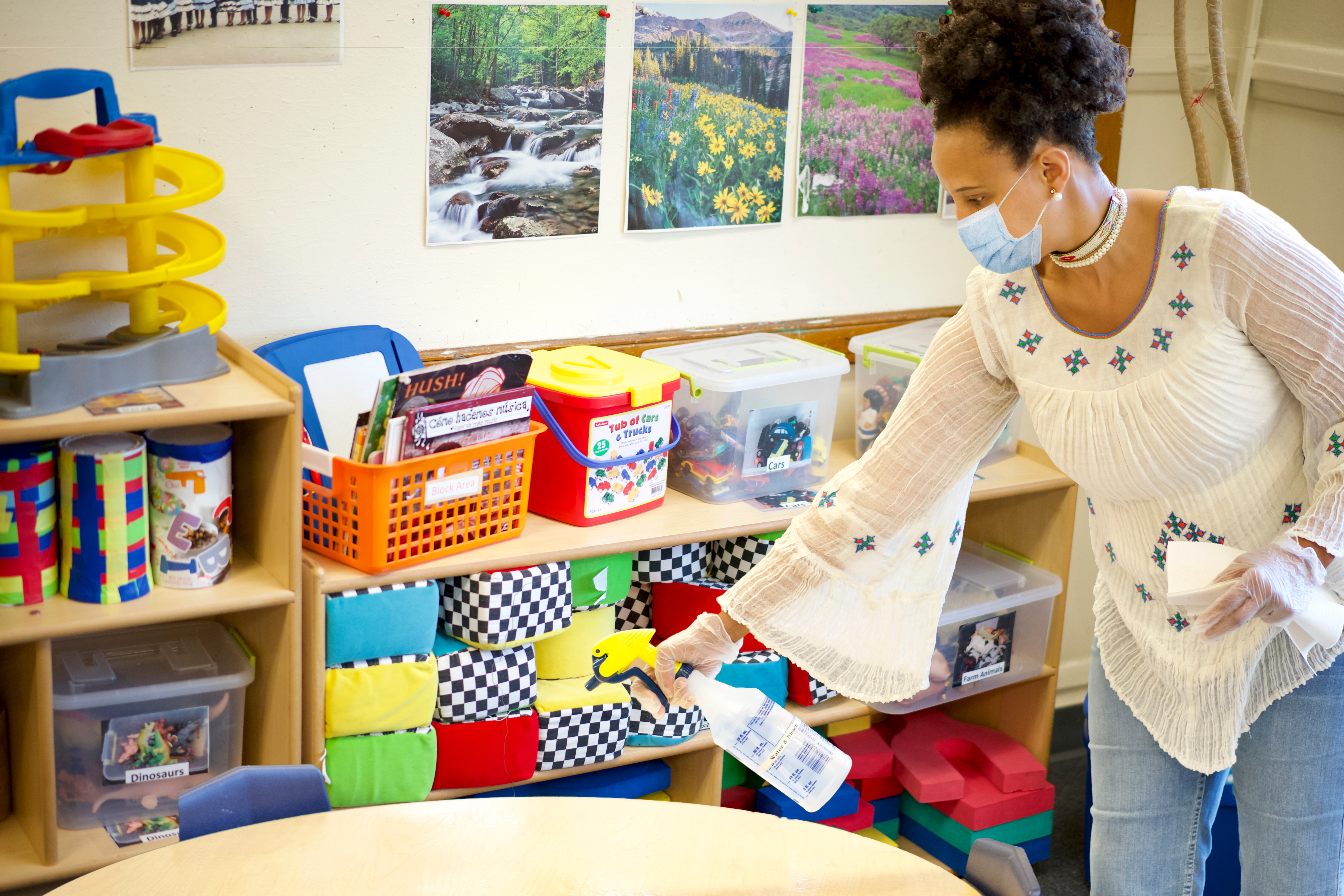 Infectious diseases can spread easily among children, families, and staff. Germs that cause infectious diseases can spread by direct touch, through the air, and through blood and body fluids. Germs can also spread when fecal particles from one person enter the mouth of another person; for example, when someone doesn’t wash their hands properly after using the bathroom and before eating.
Infectious diseases can spread easily among children, families, and staff. Germs that cause infectious diseases can spread by direct touch, through the air, and through blood and body fluids. Germs can also spread when fecal particles from one person enter the mouth of another person; for example, when someone doesn’t wash their hands properly after using the bathroom and before eating.
Children are vulnerable to infectious diseases. They have not yet been exposed to the germs that cause many common infections, and they may not be fully immunized. Young children play and learn in close contact with other children and Head Start staff, enabling germs to spread. Infants, toddlers, and preschoolers spend a lot of time playing on the floor where germs can collect. Young children are also just beginning to learn healthy habits such as hand-washing and covering their mouths and noses when they cough and sneeze. Compared with adults, infants and toddlers have smaller airways, become dehydrated more easily, and have immature immune systems. These factors can cause them to be more vulnerable than adults to infectious disease.
Head Start programs reduce the risk of infectious diseases by using proper procedures for toileting and diapering, hand-washing, and handling blood and body fluids. Programs also reduce infectious diseases by setting up and enforcing policies for when a child or adult should stay home due to illness. Policies on infection control should also include how to manage an infectious disease outbreak and when to notify public health authorities of illnesses.
Immunization plays an important role in reducing the risk of infectious disease. It’s important for Head Start children to be up to date with their immunizations. Encouraging vaccination in adults can also create a layer of safety around infants and toddlers who have not yet had all their vaccines. Many vaccines are available for staff, including hepatitis B, hepatitis A, measles, mumps, rubella, pertussis, varicella, shingles, COVID-19, and annual influenza. See the Physical Health chapter for more about immunizations.
Facilities and equipment influence infection control and must be kept safe through regular maintenance. For example, a properly maintained heating, ventilation, and air conditioning (HVAC) system can reduce the risk of spreading infectious diseases through the air, and child-sized sinks make hand-washing easier for children.
Health managers can keep children and staff healthy by using many strategies that reduce the risk of infectious diseases. Visit Caring for Our Children (CFOC) Chapter 3: Health Promotion and Protection for guidelines on reducing the risk of spreading infectious diseases that are based on evidence, expertise, and experience.
Head Start Health Services Competencies
O-1 Value the connections between health and learning.
O-4 Understand the general principles of health and wellness, including promotion, prevention, early identification, and intervention.
O-5 Understand the risk factors that make some people healthy, and other people unhealthy (e.g., determinants of health) that contribute to health disparities among culturally and linguistically diverse populations.
O-6 Assist staff and families to understand children’s healthy growth and development.
O-10 Share culturally, linguistically, and developmentally appropriate science-informed health education materials with children, families, and staff.
O-11 Apply the principles of health literacy when communicating with staff and families.
CFH-19 Demonstrate infection control procedures: basic assessment, initial management, and prevention of communicable diseases.
CFH-25 Plan and oversee ongoing training to meet programmatic health and safety requirements.
CFH-26 Assure staff implement health and safety practices including daily health checks.
CFH-28 Maintain effective recordkeeping systems, and accurately track individual child and family health information.
EF-2 Understand how the attitudes, beliefs, and traditions of individuals from diverse ethnic, cultural, religious, educational, and socioeconomic backgrounds, sexual orientations, and genders affect health practices.
EF-7 Partner with families to promote safe, healthy, and nurturing home environments.
L-3 Know how to access and use external health resources, including technical assistance providers, health consultants, and state, tribal, and community agencies.
L-10 Develop, disseminate, review, and update program health and safety policies and procedures.
L-11 Conduct ongoing monitoring activities to assure healthy and safe program practice and implement improvements as needed.
L-14 Assist families and staff to increase their health literacy.
L-15 Promote staff wellness, including stress management, injury and illness prevention (e.g., staff immunizations), and healthy active living.
L-16 Maintain a Health Services Advisory Committee (HSAC) that includes engaged Head Start families, health professionals, program staff, and other community volunteers.
HSPPS Related to Infection Control
Social Determinants of Health and Equity Considerations
Social determinants of health such as safe housing, nutritious food, and access to quality health care and education can influence the spread of infectious diseases. For example, families and children experiencing unstable housing, living in crowded homes, or living in homes that need repair may experience higher rates of infectious diseases than those living in uncrowded, well-maintained homes. A family member staying home with a child who is ill may face added challenges and burdens if they worry about losing their jobs or income because they missed work. Families may not trust health authorities because of immigration status or experiences with systemic racism. Language barriers, low health literacy, and disabilities can also play a role in overall health and wellness for children and families. The factors that contribute to health disparities are critical to consider when working on infection control.
Read more:
Resource Type: Article
National Centers: Health, Behavioral Health, and Safety
Audience: Directors and Managers
Last Updated: May 30, 2023